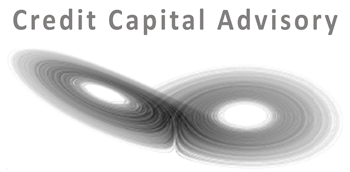The US equity market has had a surprising rebound this summer; rallying more than 17% between mid-June to mid-August. The narrative for the first half of the year had been focused on a pending recession, given that a sustained decline in economic output tends to correspond to falling capital values. This narrative has been supported by two quarters of negative real GDP growth, which was inevitable given how high inflation had risen.
Despite the fall in real GDP, the growth in nominal wages and nominal output remains robust while inflation finally appears to be falling, as indicated in Chart 1. This suggests that the narrative of a collapse in growth and capital values had been overdone.
Chart 1: Macro indicators – US

In addition, the US labour market remains strong with low unemployment supported by a decline in the labour force participation rate, as shown in the top pane of Exhibit 2. And although job vacancy rates have declined to 10.6 million in June (down from 11.3 million in May), this is still well above the 7.1 million average between 2018-2019.
However, there has been a decline in housing starts, and some commentators are raising concerns about a pending housing crash. Declines in housing starts tend to coincide with falls in the housing market risk premium, as shown in the bottom pane of Chart 2, indicating that the relative returns of housing are expected to fall. The housing market risk premium tends to fall as interest rates rise, hence this should not be surprising.
Chart 2: US labour and housing market indicators

The concerns of a fall in housing starts signaling a housing crash are wrongheaded, though. Consumer leverage ratios are at similar levels to 2001. Moreover, mortgage originations in terms of volume have been dominated by risk scores of greater than 760 (the higher the number – the better the credit quality) as shown in Chart 3. While it is perfectly plausible that house prices might fall, the level of credit risk and leverage across the housing market is significantly lower than it was in the buildup to the global financial crisis.
Chart 3: Consumer leverage and mortgage originations

Last quarter’s note highlighted a fall in profit expectations although some other indicators remained positive for the economy. Hence, the overall outlook was negative but not overly so. The outlook for the next quarter continues to show declining near term profit expectations across all major sectors of the economy. This indicates that the Wicksellian Differential can be expected to decline, placing negative pressure on asset values.
Once again, though, both consumers and corporations continue to experience an increase in leverage which will support demand across the economy, suggesting this “recession” may not follow a typical path.
Table 1: Outlook for US Wicksellian Differential

Source: Refinitiv Datastream, Credit Capital Advisory
Indeed, if future demand were expected to slump, such a sentiment would be observable in credit quality across high yield obligors. The Q2 2022 corporate credit transitions for North America from Credit Benchmark demonstrate a continued improvement in credit quality compared with 2018-2019.
The data, based on over 40,000 observations of bank loans to North American corporates does not indicate an imminent jump in the default correlation. Indeed, significantly more b and bb category obligors are experiencing upgrades rather than downgrades compared to 2018-2019. One reason behind this improved credit quality is that during the pandemic, overly leveraged obligors defaulted, resulting in a remaining cohort of better quality obligors.
Table 2 shows that compared to the benchmark period of 2018-19, only the aa category is experiencing higher downward transitions. This ought to be understood as part of a general shift of investment grade obligors down the credit quality curve, suggesting that this credit cycle may well be a much shorter one.
Table 2: North American Corporates – Credit Transitions

Secondary market bond index data by credit category indicates that high yield bonds are riskier than they were during the 2018-2019 period, although they have seen a fall from their mid-July highs indicating some improvement in perceived credit quality by investors. The higher yields for these bonds, in conjunction with the upward rating transitions of obligors, can offer short term opportunities for investors.
Chart 4: Credit indices by rating band – US

While the outlook for the Wicksellian Differential is negative, indicating some downward pressure on asset values, bond investors still have to manage the ongoing risk that inflation doesn’t fall as fast as expected, particularly given the uncertainty in energy prices.
Dramatically rising energy costs in Europe will not only curtail demand, but there is evidence that commodity price shocks that increase headline inflation do feed through to core inflation. While residential energy costs are forecast to rise in the US by 15%, according to the EIA, if actual price increases turn out to be higher, along with other goods and services, then the Federal Reserve might need to raise short term rates to much higher levels, which in turn will impact riskier obligors who need to refinance. Long maturity US Treasuries are less likely to be impacted, given the current yield curve inversion.
In summary, although the US economy is clearly under increasing stress, it is still holding up reasonably well. This level of uncertainty is also why investors should consider dynamic asset allocation. Forecasting asset values more than a quarter ahead is fraught with difficulty at the best of times.
